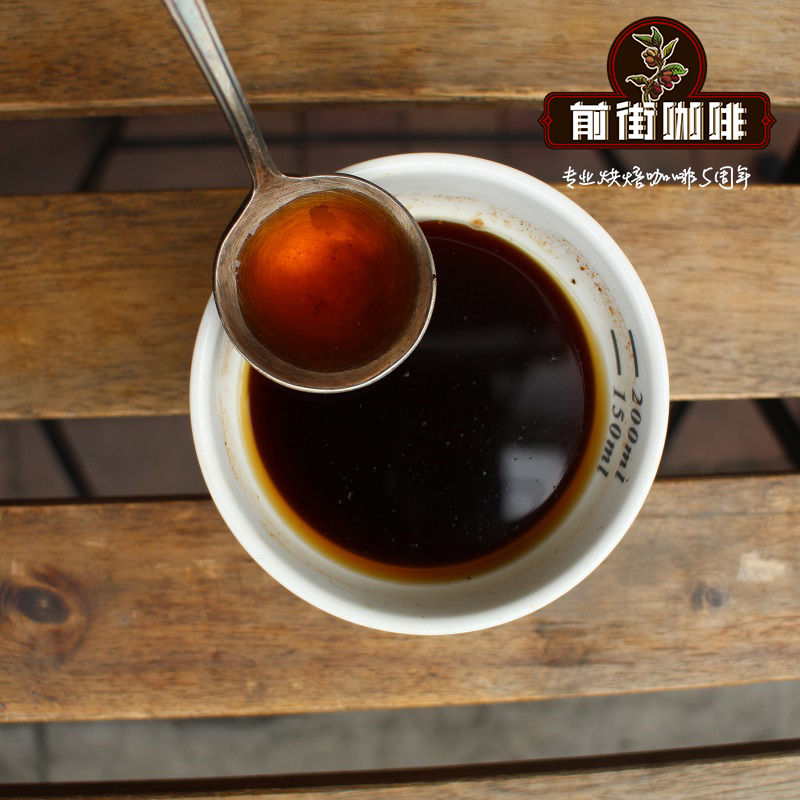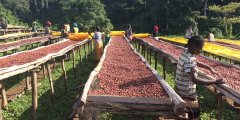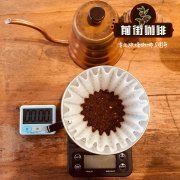The story of the characteristics of coffee beans treated with wet planing in Indonesia

Professional coffee knowledge exchange more coffee bean information please follow the coffee workshop (Wechat official account cafe_style)
Indonesia is the largest archipelago country in the world. Arabica coffee was introduced and planted during the Dutch colonial period in the 18th century, until it became the top five coffee producing country in the world in modern times. the main producing areas are located in Sumatra, Java and Sulawesi. The northern part of Sumatra is relatively high above sea level. Aceh, where Lake Tawar is located, and North Sumatra, where Lake Toba is located, are two major Arabica coffee producing areas.
Lake Tawa is located in the Gayo mountains of Aceh province in Sumatra; across both sides of the equator in Indonesia, the hot and humid rainforest climate is rich in rainfall and fertile volcanic soil brings rich nutrients to coffee; however, due to the remote transportation inconvenience, coffee was not planted until 1924, mostly with traditional shade and no pesticide cultivation. Indonesian wet planing method
The local climate of the wet planing method in Indonesia is humid, and the shelled beans are initially washed and fermented, and after one or two days of exposure, the moisture content of raw beans is still 30% Murray 50%, that is, peeling off the seed shell and then continuing to dry, so as to shorten the drying schedule of raw beans; after about 2 days of drying, the moisture content of raw coffee beans can be reduced to 12%. This unique semi-washing method in Indonesia is called Giling Basah by locals, also known as wet stripping (wet-hulled). Indonesian wet planing method
The Indonesian wet planing method is commonly known as Mantenin's Sumatran Arabica Coffee, which comes from the local ancient aboriginal people. it is rumored that the Japanese occupied Sumatra in the 1940s, and a soldier was shocked by the coffee he drank in North Sumatra. and ask the locals what kind of coffee it is. However, due to the lack of language, the other party misunderstood him to ask him who he was, and replied that he belonged to the Mandaining tribe. Later, it became Mantenin because of the mispronunciation, which became synonymous with Sumatran coffee under the difference between yin and yang. The so-called aged beans are selected coffee beans of good quality, which have been stored for more than 5 years by 3murmur. they are stored in a warehouse with good ventilation or special temperature and humidity control, and they have to turn over piles and turn cloth bags regularly. So that the degree of dryness of coffee beans can be consistent, with the passage of time, the acidity of coffee will gradually disappear, while leaving a solid rhyme and sweetness, the flavor is as charming as Pu'er tea.
Indonesia old Mantenin and previously sold Indian style Malaba together explained that both were the special flavor beans caused by the colonial countries because they were shipped back to distant Europe, and both were new beans (new crop) of inappropriate years. After unique conditions to put them, first select the raw beans (with shell beans) that are suitable for the conditions, and place them in the warehouse to turn the beans regularly. Through the long-term monitoring of the treatment plant, temperature, humidity and water content to avoid mildew of raw beans.
END
Important Notice :
前街咖啡 FrontStreet Coffee has moved to new addredd:
FrontStreet Coffee Address: 315,Donghua East Road,GuangZhou
Tel:020 38364473
- Prev

Introduction to the planting situation of Kayon Mountain Coffee Farm in Guji producing area of Guji, Ethiopia
Professional coffee knowledge exchange more coffee bean information please follow the coffee workshop (Wechat official account cafe_style) KAYON MOUNTAIN-ODO SHAKISO WOREDA, GUJI ZONE-ISMAEL HASSEN AREDO Kayon Mountain coffee farm covers an area of 500ha, coffee cultivation area of about 300ha, since 2012 by Ismael Hassen Aredo and his family
- Next

Candle candle, a name with oriental classical charm in the eyes of Mao bamboo, is actually a transliterated word.
Professional coffee knowledge exchange more coffee bean information please follow the coffee workshop (Wechat official account cafe_style) [Origin]: 90 + Ethiopia SNNP, Sidama (Hidamo) producing area [altitude]: 1750m-2000m [processing method]: sun [flavor]: nectarine, tropical fruit, cream, cinnamon Nekisse honey kiss N2 Level 12 [origin of the name]
Related
- Detailed explanation of Jadeite planting Land in Panamanian Jadeite Manor introduction to the grading system of Jadeite competitive bidding, Red bid, Green bid and Rose Summer
- Story of Coffee planting in Brenka region of Costa Rica Stonehenge Manor anaerobic heavy honey treatment of flavor mouth
- What's on the barrel of Blue Mountain Coffee beans?
- Can American coffee also pull flowers? How to use hot American style to pull out a good-looking pattern?
- Can you make a cold extract with coffee beans? What is the right proportion for cold-extracted coffee formula?
- Indonesian PWN Gold Mandrine Coffee Origin Features Flavor How to Chong? Mandolin coffee is American.
- A brief introduction to the flavor characteristics of Brazilian yellow bourbon coffee beans
- What is the effect of different water quality on the flavor of cold-extracted coffee? What kind of water is best for brewing coffee?
- Why do you think of Rose Summer whenever you mention Panamanian coffee?
- Introduction to the characteristics of authentic blue mountain coffee bean producing areas? What is the CIB Coffee Authority in Jamaica?

